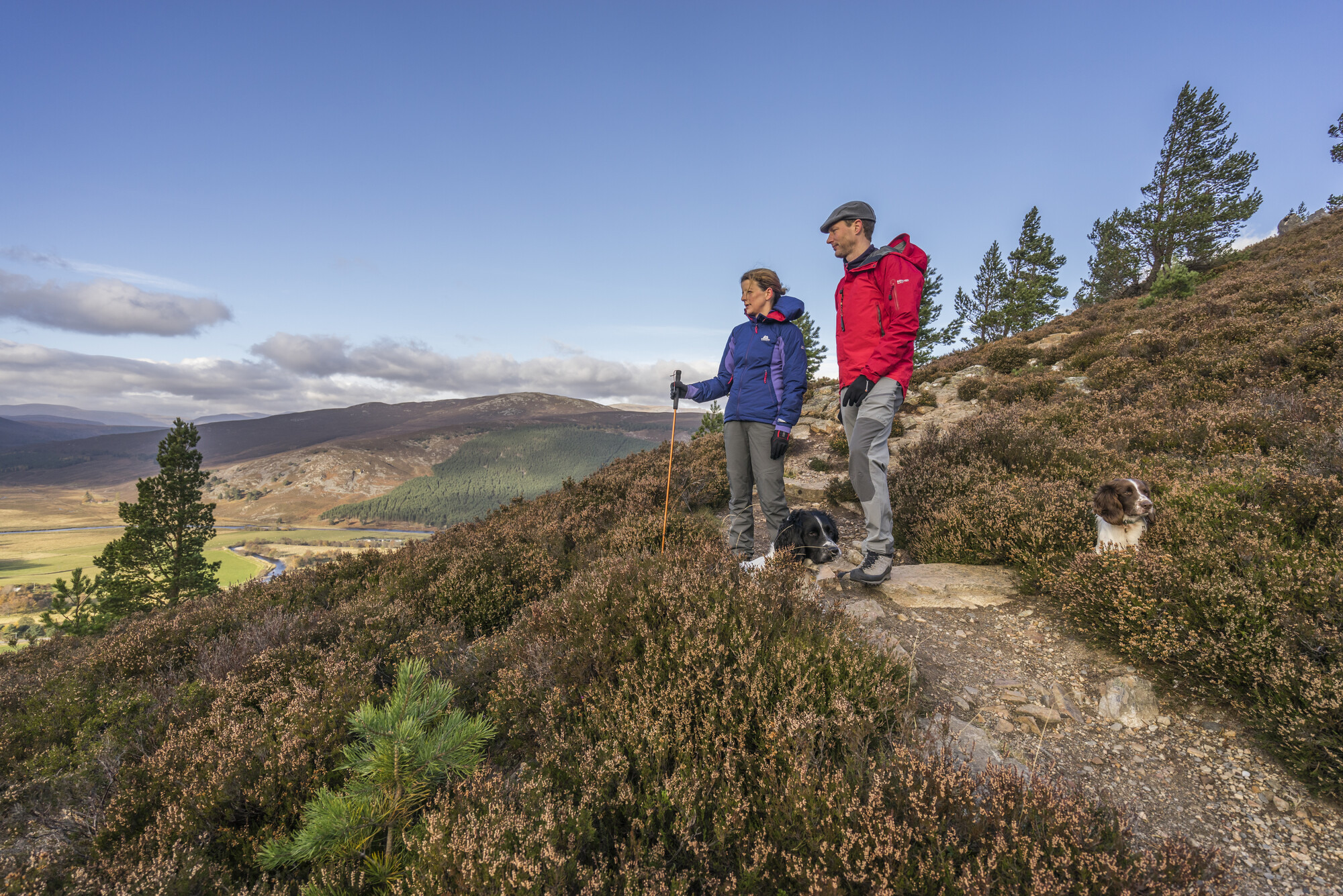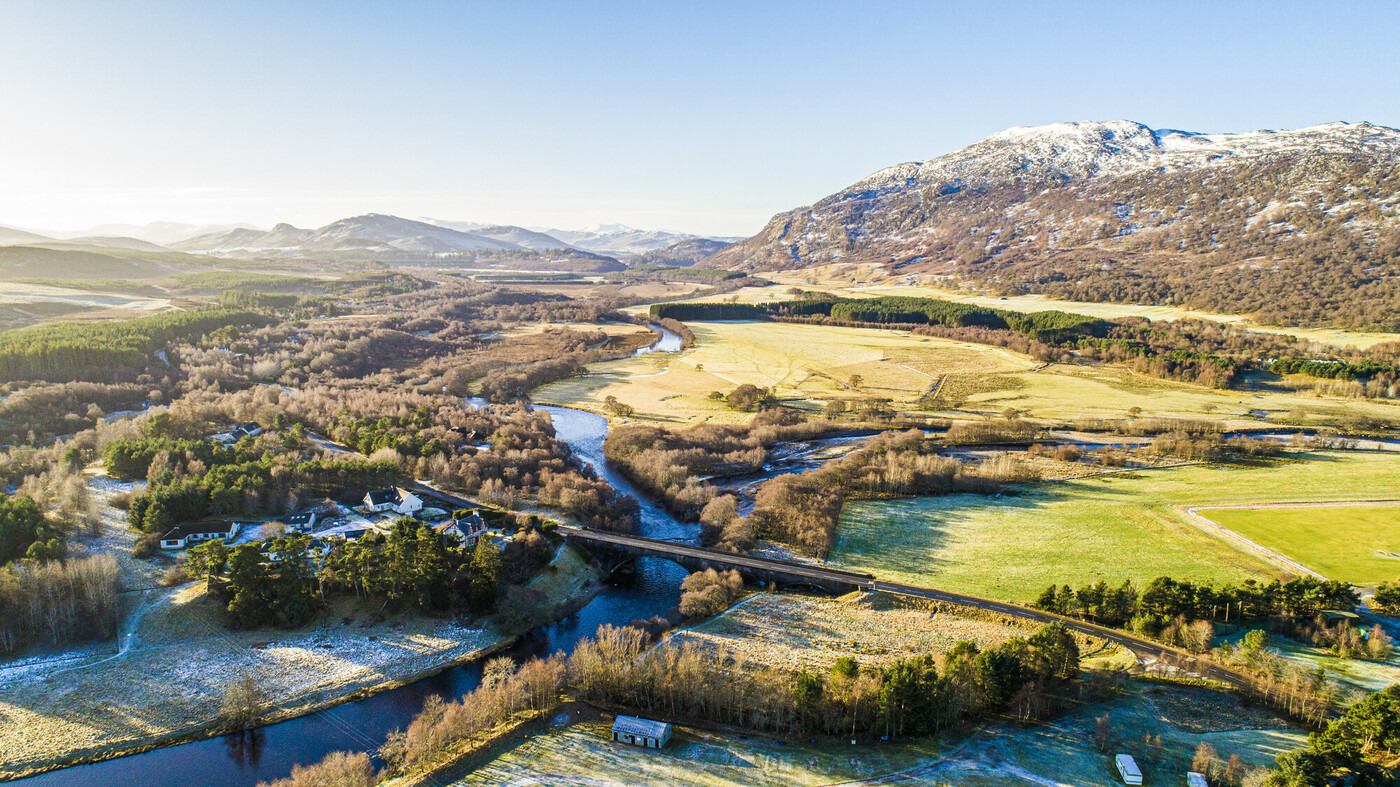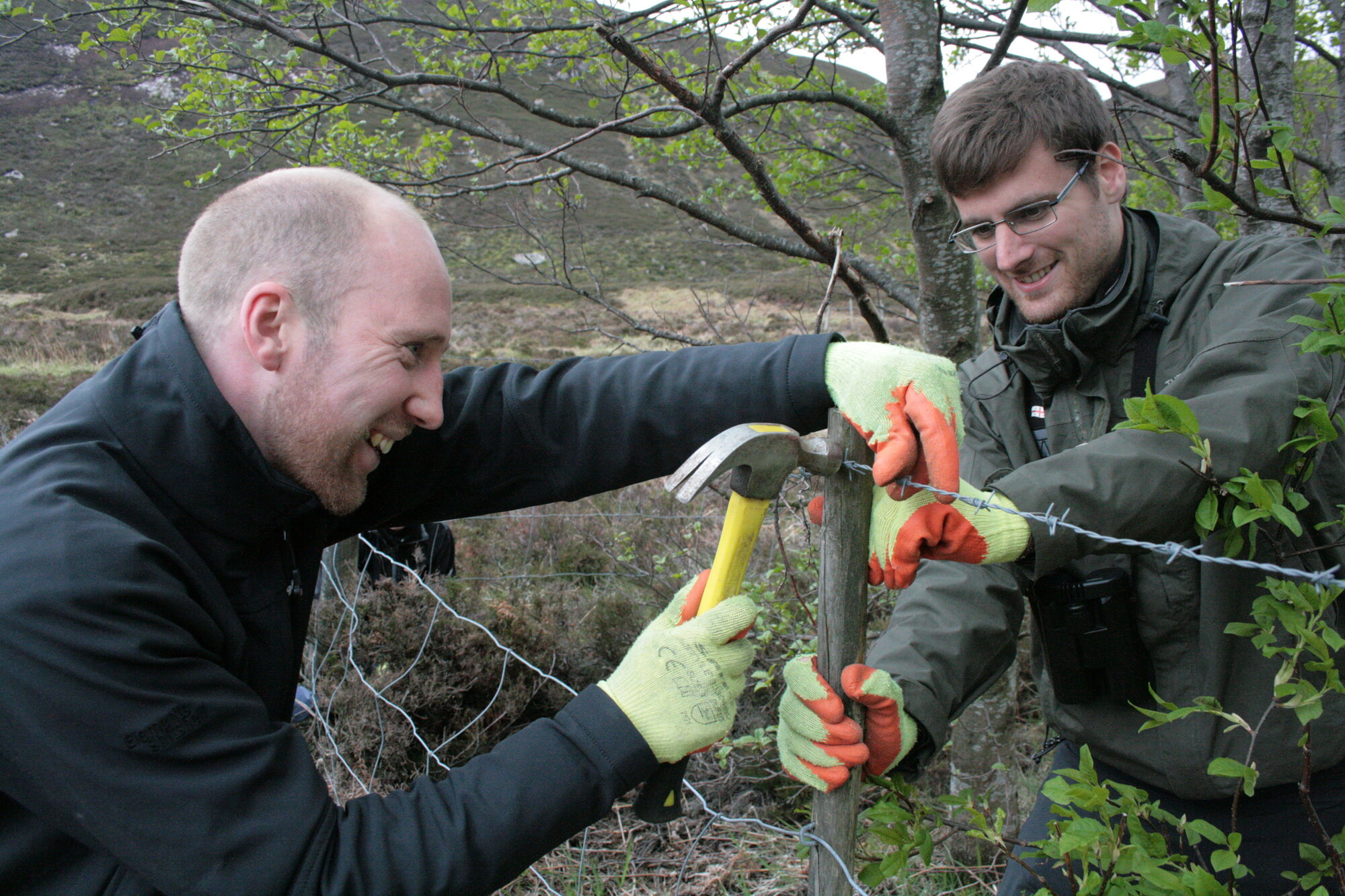200911CNPABdPaper1AACEOReport
CAIRNGORMS NATIONAL PARK AUTHORITY
Formal Board Paper 1 — 11th September 2020
CAIRNGORMS NATIONAL PARK AUTHORITY
Title: CEO REPORT AND CONVENER UPDATE
Prepared by: GRANT MOIR, CHIEF EXECUTIVE
Purpose:
- To highlight to Board Members the main strategic areas of work that are being directed by Management Team. These are areas where significant staff resources are being directed to deliver with partners the aspirations of the National Park Partnership Plan.
Conservation:
Cairngorms Nature: The Cairngorms Nature Action Plan is now one third of the way through delivery. Of the 83 actions, 72 are reported as ‘green’, 6 ‘amber’, no ‘red’, 4 ‘not started’ and 1 ‘not reported’. Amber actions under consideration by the Cairngorms Nature Strategy Group include peatland restoration, raptor monitoring and nature friendly farming. The Cairngorms Wild Plants project was recently successful in securing National Lottery Heritage Fund funding to continue the project into a second phase, focusing on work with land managers https://www.bbc.co.uk/news/uk-scotland-highlands-islands-53805626. Projects delivered through the Biodiversity Challenge Fund which were slightly delayed by restrictions on fieldwork during lockdown have resumed and are back on track for delivery within agreed timescales.
Cairngorms Capercaillie Project: Recruitment is underway for a project officer, capercaillie advisory assistant, communications officer, administration officer and community ranger. New governance and management processes are being put in place with a refreshed Project Board to support advocacy and relationship building amongst land managers and provide additional strategic expertise related to our work with communities. The community consultation on the Carrbridge Capercaillie Conservation Strategy has closed. Full results are publicly available here and have been shared with the community via the Carrbridge Capercaillie Newsletter, delivered to all households. The Carrbridge Capercaillie Group are now in the process of reviewing the results and ways to integrate them into the strategy. Work is developing with further communities of interest and place in partnership with Cairngorms Business Partnership, land managers in Glenmore, Developing Mountain Biking in Scotland, and Balmoral Estate. Plans for habitat improvement and genetic monitoring continue as scheduled. The full project Update and Summary document is now live on the project website — link here.
Woodland expansion targets: We are well on the way to seeing the 2017 – 22 woodland expansion target of 5,000ha being reached. To date, the area of woodland creation through planting and regeneration achieved through the Scottish Forestry Grant Scheme and through deer management is approximately 4,800ha. We are continuing to discuss opportunities for woodland creation with a number of landowners. Uptake of the Woodland Challenge Fund in its first year (2019÷20) was low, however interest this year has significantly increased.
Peatland Restoration: Restoration work has been hampered by Covid 19 and the limited availability of suitably skilled contractors. Covid-19 is delaying the delivery of projects in 2020 and our focus is on completing 11 projects that had grant funding offers in 2019. Several of these projects are about to start and this should deliver 428ha of restoration management if contactors can be found and they can be completed before this winter. Funding for Peatland ACTION is changing following discussions with Scottish Government. CNPA will be directly funded to deliver restoration work from 2021. This will enable quicker processing of project funding and the ability to offer multi-year grants for work.
Tomintoul and Glenlivet Landscape Partnership: has been given a 3 month extension by NHLF with the aim of completing all projects by the end of 2020. There is still a lot of work to do, which has been hampered by lockdown restrictions, but we are on target for completing all of the most significant tasks on time and within budget. Major project work being completed includes woodland creation near the Lecht mine, sediment management on the River Avon, finalising the digital archive in the Discovery Centre and installation of all the interpretation and signage across the landscape partnership. We have recently contracted out assistance with drafting a marketing plan/toolkit and agreeing management and maintenance plans with all the partners. Both of these contracts are critical for the legacy of the programme in ensuring all the investment that has been put in place is properly maintained and generates further benefits into the future.
Visitor Experience:
Cairngorms Local Outdoor Access Forum: Advice has been sought from Cairngorms Outdoor Access Forum during Covid-19 lockdown and re-opening on the promotion of responsible outdoor access. The key areas that we have focused our activity on are camping and camp fires while also providing information on campervans. Scottish Outdoor Access Code provides clear advice on campfires; ‘never light an open fire during prolonged dry periods or in areas such as forests, woods, farmland, or on peaty ground or near to buildings or in cultural heritage sites where damage can be easily caused. Heed all advice at times of high risk.’ As this covers most of the National Park we have been reinforcing this with clear ‘no fires, no barbecues’ messages on media, variable road signs, posters and ‘face to face’ discussion with rangers. Responsible camping is allowed on most countryside so here our focus has been on litter removal, safe toileting and no fires. Toilets open to the public have widely been promoted and we have supported NTS Mar Lodge in the hire of addition ‘portaloos’. Campervans are not covered by the access legislation but we have been promoting government advice; not blocking an entrance to a field or building, not making it difficult for other people to use a road or track, having regard for the safety of others, trying not to damage the verge, using a car park if one is nearby. Vehicle Access (car parking) is also not covered by the code but we have at busy times seen large numbers of cars wanting to park at key ‘hot spots’. Here, with partners, we have introduced a range of site specific interventions to better manage cars including:- a) Additional staff on site supported by CNPA seasonal rangers b) Variable road signs providing up to date information – three on A93 Deeside and one in Glenmore c) Temporary installation of no parking bollards – Glenmore, Loch Insh & Auchlean d) Temporary speed reduction in Glenmore e) Additional temporary car parking – Mar Lodge/Linn of Dee f) Temporary closure of the road to Loch Muick when the car park is full
Long Distance Routes: a) Speyside Way: The Speyside Way extension from Aviemore to Newtonmore is now open and being well used by walkers and cyclists. Work on signage, mapping and promotion is ongoing with additional path signs and map interpretation panels being upgraded and installed. Newtonmore Business Association is constructing a creative, sculpture seat start/finish that is scheduled to be complete for a formal, national opening of the extension autumn this year. Additional funding has been secured from SNH to upgrade key sections of the existing route within the National Park this year. Further work is required on safe signage for the on road section from Kingussie to Ruthven Barracks that is also NCN7 Cycle Route and involves Sustrans, Hitrans and Highland Council. b) Deeside Way Extension: Planning consent has been obtained for a path from Braemar and Invercauld Bridge but no funding has been secured and Covid-19 has to date put this ‘on hold’. Sustrans has identified NCN 195/Deeside Way as a key route and pre Covid-19 was working with the two local authorities and CNPA to better develop and promote the existing route from Aberdeen to Ballater. The route and extension within CNP is being assessed for potential to be included within Heritage Horizons Lottery Bid.
Mountains and People Project: the five project has secured a Lottery Fund extension to go beyond the Summer 2020 project end and is on schedule to complete the upgrade and improvement of 53km of key mountain paths in Badenoch, Highland Perthshire, Angus Glens and Deeside including the well know Munro paths of Beinn a’ Ghlo visible from A9, and Mount Keen. Further discussion is required with Outdoor Access Trust for Scotland on how we continue our partnership going forward and support the maintenance of the upgraded paths.
Seasonal Rangers: The potential for more visitors to the National Park post lockdown and the need to have more staff on the ground encouraging responsible access was identified in April. Job descriptions, risk assessment, operational procedures and a temporary restructuring within CNPA to manage the team was undertaken involving Visitor & Corporate Services. Some 178 people applied for a 4.5 month contract. The seasonal rangers were interviewed 9th June, with eight appointed, starting two week training on 15th June and on site work 27th June. Their key function is to support land managers and communities in encouraging visitors to responsibly enjoy a visit to the countryside of the National Park. They are not intended to replace the existing partnership ranger provision or other existing partner staff undertaking this work. The work of seasonal rangers is discussed in more detail in Paper 3.
Volunteering & Health Walks: our work supporting both health walks, volunteering and volunteer rangers has been ongoing during lockdown but no practical activity has been undertaken with our focus being maintaining support to keep the groups engaged. Work is now starting to ‘reactive’ all three area.
Education and Inclusion: our work supporting education and inclusion is also on hold. Specifically John Muir Award, Junior Rangers and work supporting Backbone engaging with ‘new Scots’ (newly arrived residents often of ethnic and cultural minorities) is on hold. Much of this work is likely to be ‘on hold’ until spring 2021 with local authority education services being a key partner in determining when it is safe for pupils to re-engage in outdoor education.
Information and Interpretation: key work is focusing on the Speyside Way including the sculpture start/end point in Newtonmore, and interpretation supporting the delivery of Badeboch Great Place Scheme.
Rural Development:
Local Development Plan 2020: The Proposed Local Development Plan was submitted to Scottish Ministers in September 2019 and the examination of unresolved representations began in December 2019. All matters were dealt through written representations and no oral sessions were held. The Park Authority received the Examination Report and the Reporters’ list of recommended changes on August 24 2020. The National Park Authority will now consider the recommended changes to the Proposed Plan in late October/early November and submit to Scottish Ministers to request permission to adopt. The Examination Report and all other material can be seen at https://cairngorms.co.uk/planning-development/local-development-plan-2020/examination/
Planning Casework: Since June we’ve dealt with a range of interesting cases including approving retention of wigwam accommodation at Glenmore, a retrospective application for track works in Glen Clova and new facilities at Cairngorm Mountain. In August we dealt with a further controversial application at Nethybridge, refusing permission for 20 houses within sensitive woodland habitat. But on the same day we granted permission for 22 apartments in Kingussie and 40 new homes in Kincraig. Meanwhile we reviewed the last ever Action Plan for the current LDP and approved new Guidance for consultation for the new Local Development Plan 2020. All planning papers are at https://cairngorms.co.uk/working-together/meetings/meeting/
Community-led Housing Delivery: Excellent progress is being made in Braemar by the local group and Rural Housing Scotland – the group have now taken out a significant loan and are waiting for submission of returns for designs. In Tomintoul the plans for re-use of the old school site for affordable housing are being led by Tomintoul and Glenlivet Development Trust and are making good progress. It now looks like HIE will now provide some significant support to help make this project happen. Next meeting for the Park-wide Community-led Housing Group has been arranged for late September.
Economic Action Plan: A new project has started in collaboration with the charity Growbiz to develop a new approach to business facilitation that is suited to our rural area. Over the next few months one-to-one sessions will be arranged with businesses, a new mentoring programme launched and steps taken to establish a Cairngorms women’s business network. In the meantime the network of Smart Villages is developing with initiation meetings taking place in Grantown, Braemar, Ballater and Badenoch. Discussions are underway with Skills development Scotland about further collaborative work. Next meeting of the Economic Steering Group is in mid-September.
Cairngorm Mountain: CNPA responded to the masterplan consultation in August 2020 and the response can be found here.
Tourism Action Plan: Meetings of the Cairngorms Tourism Emergency Liaison Group have taken place at least every two weeks since March, pulling together key business and destination organisations, local authorities and relevant agencies. Meetings took place in late with the key community leaders in June and in August along with Cairngorms Business Partnership to discuss visor management issues and to hear feedback. Common theme raised included the need for investment in infrastructure, the success of seasonal rangers, litter collection and provision for motor homes. The next meeting of Cairngorms Tourism Partnership will be in early November.
Rural Tourism Infrastructure Fund: Forest and Land Scotland have advised that work is finally due to start on the Glenmore path in late October and be complete by end of the year. We have agree to submit applications in Round 3 of the Fund for improved car-parking and traffic management at Glen Muick and at Beinn a Ghlo (both sites in partnership with Outdoor Access Trust Scotland) and at Dinnet Estate. Ideas have been submitted to Scottish Government officials about the pressing need for further investment and for simple finance and delivery arrangements.
A9 Dualling project: The project to develop and off-road route from Aviemore to Carrbridge continues to develop pace. CNPA and The Highland Council (THC) have given advice about consent mechanisms and route choice. The consultants working for Transport Scotland are doing further analytical work before consultation with community groups and potential users.
Badenoch Great Place Project: The project partners have been delighted to announce the launch of the new Badenoch Heritage website, especially designed to highlight Badenoch’s fascinating cultural heritage to visitors, local businesses and residents www.badenochstorylands.com. New digital illustrations of Ruthven Barracks and other sites are being created as part of series of augmented reality, 3D models of key local heritage sites to feature on the website and on the Badenoch Great Place App which is due to be released soon. An online version of the Badenoch Festival is planned with five events in the third week of September.
Digital connectivity: All the Digital Scotland Superfast Broadband Programme deployment is now complete and the similar project in HIE area is due to be complete in November 2020. For the R100 project (which will deliver significant broadband connectivity improvements to the most rural properties) the legal challenge that was holding up the £384 M investment in north Scotland has now been resolved. Near Aviemore the project to develop a network to support the “Internet of Things” in Cairngorm/Aviemore and Glenmore is gathering pace. There was a positive stakeholder meeting in late July and we are now finalising plans and cost estimates for a modest network of path and traffic monitoring sensors in the area to help with future visitor management.
Stakeholder Engagement:
There has been extensive stakeholder engagement on visitor management issues with communities, estates, businesses and public bodies. This is all set out in the visitor management update.
Other stakeholder engagement has taken place with NPUK, HIE, EELG, eNGO’s, Crown Estate Scotland, Well-being Economy Alliance, Transport Scotland, SLE, Climate Ready Aberdeenshire.
The Heritage Horizons Programme Advisory Board has also met including reps from SLC, NHS, YoungScot, Sustrans, Backbone, EnvLINK, VABS, CBP, Balmoral, WEA, Edinburgh University and our Youth Action Team.
Communications:
Cairngorms Nature Campaign: August communications focused on promoting sustainable farming and local produce to encourage people to buy local and support local businesses. During Climate Week 14th-20th September 2020 we will promote progress made against our Green Recovery Plan and a blog by Doug McAdam will consider how changes to land management can help tackle the Climate Emergency.
Make It Yours Campaign: A Green Recovery Fund launched in August supports projects that are focused on green solutions that help the well-being and economic growth of communities, create jobs and benefits the community in the longer term. The GrowBiz initiative has been promoted following £20,000 support from CNPA.
Active Cairngorms: To help manage visitors to the Park during the summer our communications has focused on promoting clear, consistent and positive outdoor access advice to encourage responsible behaviour in the Park. Given the dramatic increase in new visitors to the Park, this has focused on tackling litter, fires, wild camping and parking issues at ‘hot spots’ around the Park. To reach new audiences who don’t follow the CNPA or other public body social media channels or visit our websites, we have worked with social media influencers and retail outlets to help get our messages across. Eight new seasonal rangers have provided invaluable support on the ground.
Corporate Communications: Scottish Government’s COVID19 health and safety messages have been promoted through our social media activity and website. CNPA’s Annual Report 2019⁄20 was submitted to Ministers and published in July 2020 and a progress report on the Gaelic Language Plan was published in August. Bruce MacDonald, our Gaelic Language student intern, has prepared an online Story of Shinty trail to be launched in autumn and we have gained £10,000 from the Bòrd na Gàidhlig to further promote Gaelic experiences in the Park.
Organisational Development:
Business Continuity Planning (BCP): The BCP team continues to meet regularly to plan around the next stages of the SG roadmap. Staff access to the building is currently limited to business critical reasons, which are approved and logged by Heads of Service. Access is currently restricted to a maximum of 12 staff/board with no access to the public. In preparation for when SG moves to phase 4 of their road map, and access to non-essential offices is permitted, offices have been scrutinized with regards to 2m distancing and desks have been allocated as “hot desks” and therefore available for use by staff who need to access the building. Access will at this point be restricted to 26 staff, which will be managed by Heads of Service on a rota basis. We do not expect full use of the building or board room to be available until SG moves to phase 5, which we expect is likely to be next year. In the meantime staff are supported to work from home with regards the provision of IT and office kit, and broader wellbeing support. All line managers have recently attending training on “Managing Virtually”.
Office Extension Project: We have had to put on hold the plans to upgrade the meeting and social space in the old building, as depending on guidance from Scottish Government regarding the opening of non-essential offices, we may temporarily require this space for office space, to facilitate more staff being in the office whilst still adhering to social distancing.
We are in the process of procuring a redecorating contract, and intend repainting the old building by the end of December, whilst staff numbers in the Grantown building are still limited.
We are in the process of planning improved cycle storage facilities to promote active travel to work.
Staffing update: Since March, staffing updates are as follows: a) Bruce McConachie resigned from the part time Land Management Advisor post. b) Jackie Taylor resigned from her full time TGLP Programme Manager post. As there are only a few months of this project remaining, she was not replaced but the work was allocated to others across the organization c) Eight Seasonal Rangers joined the Authority in June on full time contracts to the end of October. They are; Pete Short, Duncan MacDonald, Craig Fraser, Blair Johnston, Nicola Williamson, Victoria Inglis, Lianne Starbuck-Stephen and Polly Freeman. d) Nasim Mehrabi joined the Authority as a Graduate Planner on a 3‑year fixed term contract.
Youth Employment: a) Internships: Cameron Cosgrove (Woodland); Peter Green (Peatland) both completed 4‑month internships, mapping woodland and peatland respectively. Bruce Macdonald commenced a Gaelic Internship in January, which has been extended to February 2020. We are in the process of recruiting an HR Intern, on a 12-month fixed term contract, to support staff wellbeing and HR casework. b) Apprenticeships: Reece Musgrave completed his IT Apprenticeship in August. This was a 2‑year post during which he achieved his SVQ level 6 qualification in ICT. Reece also completed additional modules at UHI. He is now going to Aberdeen University to study IT. Reece has been replaced by Luke Diggins, who until recently attended Kingussie High School. Luke joins the Authority on a similar programme in September. c) We are working in partnership with UHI and Kingussie High School to support Damian Paluga complete a Foundation Apprentice – this involves a work placement for a youngster still at school, working for the organisation one day/week during term time. The placement will help Damian achieve his SVQ qualification in business administration.
Shared Services: Continued work to provide HR support the Scottish Land Commission has included the development of new policies, the development, staff consultation and submission of the 2020⁄21 pay remit, which has recently been approved and implemented.
Organisational Development Strategy 3: ODS3 has now commenced. All working groups have met, and a draft action plan has been developed. The Best Companies Survey and Healthy Working Lives Survey results have fed in to the ODS3. Since Lockdown commenced, many of the actions were delivered organically, particularly those around agile working. Some actions are no longer relevant and the Management Team is in the process of validating the existing action plan. Several staff surveys have been conducted during lockdown, and the responses will further inform the evolving ODS.
Grant Moir September 2020
Board Convener Report – For Information
Although summer has been a quieter time administratively, the gradual reopening of the Park and its businesses to tourists has seen a huge surge in visitors. The significant visitor management planning undertaken by the National Park during the lockdown has paid off and the new seasonal ranger service has been able to advise both new and returning visitors on how to safely enjoy the area. This doesn’t mean that there hasn’t been issues, but it has definitely reduced the number and scale.
The CNPA is continuing to work very closely with partners to manage the increase in visitors and I’d like to express my thanks to all of the staff involved in this. I believe that the CNPA has shown great leadership on this issue and I hope that we can continue and expand on a lot of this good work next year.
Following approval at the June Board meeting the Cairngorms Green Recovery Fund has been welcomed positively and is a very practical example of the CNPAs work supporting economic recovery. I would encourage Board Members to mention it to anyone they think may be interested in applying.
Following our last Board meeting the Cairngorms Capercaillie Project was successfully awarded funding from the National Lottery Heritage Fund to support the delivery phase of the project. Work undertaken during the pilot stage will be used to inform how best to proceed through the delivery phase. I hope that the delivery phase will be an opportunity for our partners and communities to join us in working together on a safe future for Capercaillie in the Cairngorms.
Finally I would like to express my thanks to Geva Blackett for her work over the past 18 months as Deputy Convener, in particular for her work during the COVID-19 lockdown and on economic development matters.
Xander McDade Board Convener




